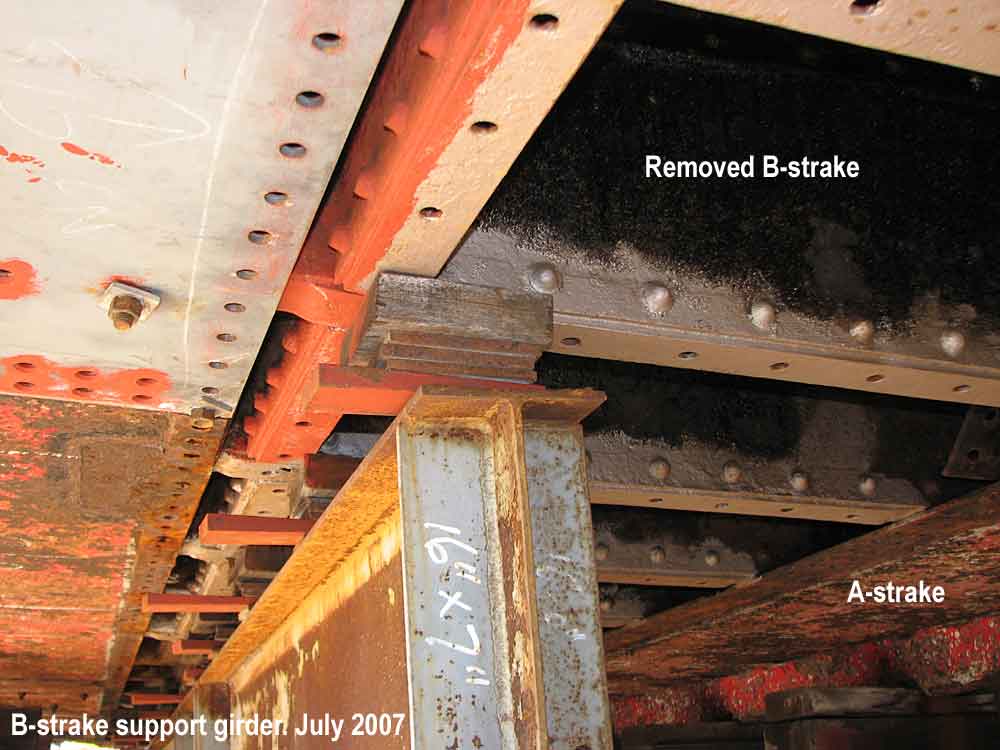Replacing Parts Under Docking Blocks
 When a ship is docked, the hull is supported on the keel with additional supports on the side bilges. With the John Oxley the side keel blocks provide additional support in the heavy midships section, one strake below the bilge keels. The midships section supports the 2 boilers, about 30 tons each, the main engine and auxiliary engines and pumps, plus the main superstructure. Altogether a few hundred tons.
When a ship is docked, the hull is supported on the keel with additional supports on the side bilges. With the John Oxley the side keel blocks provide additional support in the heavy midships section, one strake below the bilge keels. The midships section supports the 2 boilers, about 30 tons each, the main engine and auxiliary engines and pumps, plus the main superstructure. Altogether a few hundred tons.
The keel and bilge blocks get in the way when the plates they support need to be replaced. The process followed was to replace all the hull plates above the blocks, and to restore the floors and frames first. This provided an improved stiffened structural framework that could take some of the load from the blocks.
The main support for the hull is under the keel. This is the strongest load-bearing member of the ship. The bar-keel is connected to the floors via the A-strake plates. Removing plates from A-strake without additional support weakens the hull considerably and risk bending the bar-keel.
 An additional supporting structure was engineered to support the B-strake floors after the B-strake plating was removed to relieve the load on the bar-keel. B-strake overlaps A and C-strake and will be the last strake to be fitted. A heavy girder was put in place on the dock. Each frame of B-strake was placed in tight contact with the girder and tensioned with a wedge driven between 2 small steel plates. The contact with the frame was by a wooden block to distribute the load.
An additional supporting structure was engineered to support the B-strake floors after the B-strake plating was removed to relieve the load on the bar-keel. B-strake overlaps A and C-strake and will be the last strake to be fitted. A heavy girder was put in place on the dock. Each frame of B-strake was placed in tight contact with the girder and tensioned with a wedge driven between 2 small steel plates. The contact with the frame was by a wooden block to distribute the load.
With the additional support, each of the bilge blocks may be removed in turn to access the plates in D and C-strake. After replacing and riveting these plates the blocks are put back in place and hardened against the hull. Similarly, the A-strake plates may be removed and replaced, one at a time, after which they are hardened against the keel blocks with wedges.




